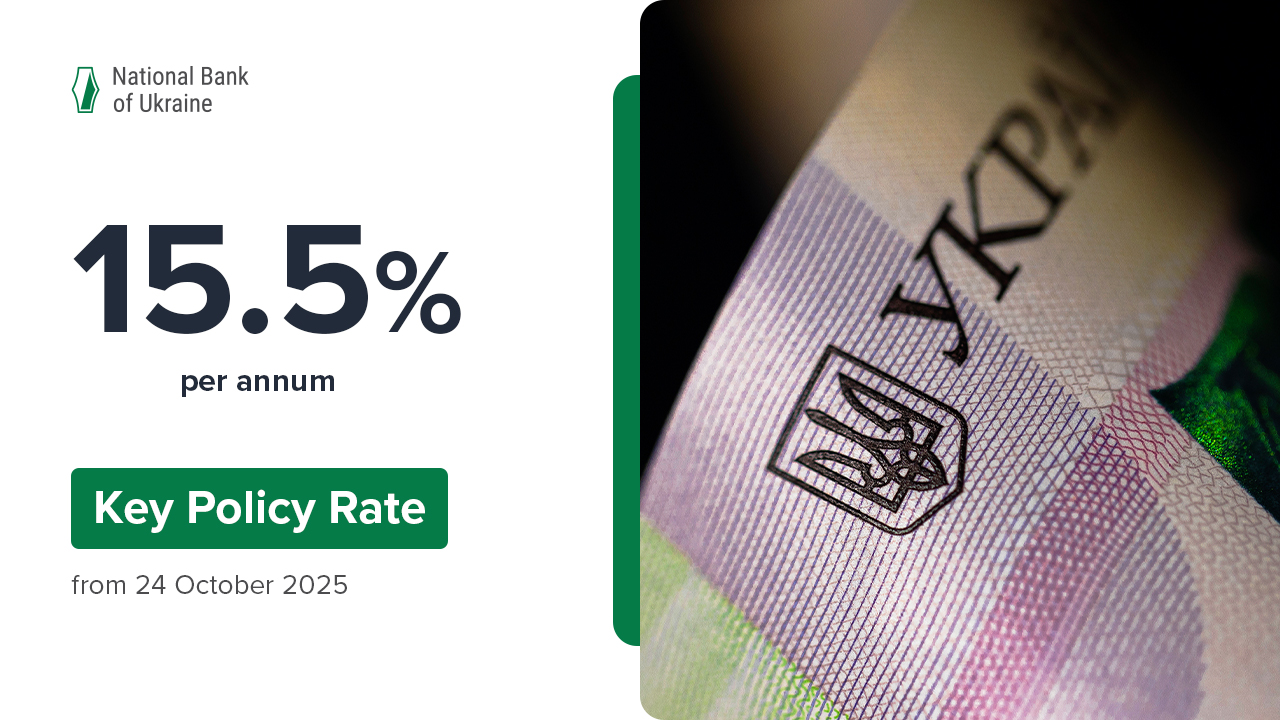The banking sector was stable in H1 2018, thanks to benign macroeconomic conditions and the absence of major shocks. The level of systemic risk was practically unchanged over that period – although the NBU estimates that credit risk and risk to the banking sector’s profitability had abated, the legal risk remained high. This is written in the Financial Stability Report that was published on 12 June 2018.
Ukraine’s key tasks are carrying out structural reforms and renewing cooperation with international financial institutions
Although the economy has been reviving for three years in a row, economic growth remains depressed due to slow progress in conducting structural reforms. Speeding up reform is the main task for the government and parliament. These reforms are critical both for maintaining macrofinancial stability and ensuring there is long-term economic growth in Ukraine. The key challenge Ukraine faces in the short-term is refinancing its external debt. If cooperation with international financial institutions does not continue, Ukraine will be unable to secure external financing on favorable terms in order to refinance its debt.
The chances that the IMF program will be renewed this summer have substantially increased since the Law On the High Anti-Corruption Court was adopted. If Ukraine receives two more loan tranches before the current program is over, short-term and medium-term risks to macroeconomic and financial stability will be minimized.
Macroeconomic stability contributed to the effective operation of the banking sector
External conditions have been favorable over the past year, driven by an increase in global commodity prices and more robust demand for Ukrainian exports. However, the continued tightening of U.S. monetary policy is increasing the risk of capital outflow from emerging markers. If this risk materializes, this could have a negative impact on Ukraine’s financial stability.
Since the start of the current year, domestic macroeconomic conditions have also been conducive to the stable and profitable operation of the banking sector, on the back of higher economic growth, the absence of FX market shocks and slower inflation. Hryvnia deposits continue to grow. Today, deposits account for over 80% of the total liabilities of the banking sector. However, these are mostly short-term deposits. If an external shock occurs, the short maturities of the banks’ funding base could lead to serious liquidity risk.
The financial performance of the banking sector is improving on the high rates of growth in net interest and fee and commission income, and a significant drop in provisioning. Most banks have already set aside enough expenses as allowances for non-performing loans. In 2018, the level of provisions will probably be the lowest for the past decade. Meanwhile, the operating performance of some banks, including two state-owned banks, is significantly lower than the average figure across the banking sector. The top priority tasks for these banks is to cut their operating expenses and to change their business models.
The rate of growth in retail lending is high and stable, at 40% yoy. Nevertheless, in monetary terms, the volume of new loans is small - new loans cover only 1.6% of total consumer spending, and currently pose no significant systemic risk to the financial sector. That said, some banks are not being conservative enough in measuring credit risk from household loans, and are overly optimistic about the probability of borrowers’ defaults.
Significant Legal Risks: A Major Impediment to the Renewal of Corporate Lending
Over the past three years, the financial standing of businesses has improved. Profitability in the real sector has increased from the pre-crisis level. However, the quality of corporate loan portfolios is not exhibiting any radical changes. Despite a number of successful efforts by banks to restructure bad debt, the non-performing loan ratio in most sectors of the economy has remained at the level of late March 2017.
The problem of NPLs is most characteristic of large borrowers and the biggest business groups. Certain groups continue to fail to service their debt even as their financial standing substantially improves. A weak judiciary and a lack of an effective legal framework to resolve NPL issues are severely undermining the trust between banks and real sector companies. This is forcing banks to be extremely careful when evaluating the solvency of potential borrowers.
At the same time, banks are actively crediting reliable borrowers: the NBU estimates that loans to non-defaulting borrowers have been rising by over 20% yoy.
Several important changes in the regulatory environment took place in H1 2018. The Verkhovna Rada adopted the Law On Establishing and Maintaining the NBU Credit Register. In addition, the first steps were made to reform the corporate governance of banks, in particular by increasing the role of the independent members of supervisory boards.
The next step has to be the adoption by the Verkhovna Rada of laws that are necessary to resume lending and revive the banking sector’s sustainable operation, including the following laws: 1) on streamlining the operation of the financial sector (to change the corporate governance standards of state-owned banks) 2) on currency 3) on the resumption of lending 4) on bankruptcy 5) on the protection of financial consumers’ rights 6) on the consolidation of the regulation of the financial services sector.
Banks’ current profits have offset the negative effect of the transition to IFRS 9
Banks are gradually transitioning to IFRS 9. Most financial institutions have already adopted new approaches to evaluating financial instruments and provisioning against expected credit losses. The equity impact of a first-time implementation of IFRS 9 is estimated at about UAH 10 billion, but this decrease has been almost fully offset by the sector’s earnings in Q1 2018. An accurate estimate of the impact of IFRS 9 implementation will only become possible after audited financial statements for the entire 2018 have been submitted by banks.
Transformation of the regulatory environment is underway to effectively prevent crises
Banks are conducting test-mode calculations of the liquidity coverage ratio (LCR), which will become an obligatory prudential requirement starting in December 2018. In the coming 12 months, the NBU will impose another requirement – the net stable funding ratio (NSFR), in test mode at first.
The first annual review of the banking sector’s resilience has officially started. Most banks only pass the stage of evaluation by independent external auditors. At the next stage, however, 25 financial institutions that jointly account for over 90% of the banking sector by assets will be stress tested under adverse and baseline scenarios.
The NBU has increased the scope of information about banks that is subject to disclosure. Banks have started to publish the values of economic (prudential) ratios and regulatory capital components. What is more, financial institutions are also publishing the data on loans issued to individuals and legal entities, broken down by borrower class, and the trial balance for the reporting month.
Based on the recommendations of the Basel Committee on Banking Supervision, the NBU has approved new risk management requirements for banks (NBU Regulation No. 64 On Organizing the Risk Management System in Banks and Banking Groups of Ukraine). The regulation sets out tight requirements for how risks (including credit, market, operational, liquidity, and interest risk in the banking book) are measured, managed, identified, and responded to by authorized persons and the banks’ management bodies. The regulation imposes an obligatory stress-testing requirement to assess risks and the ability to withstand them.
The NBU and the banking community have started to discuss a new capital instrument – perpetual subordinated debt – which will become part of core capital. This is the first step in bringing the structure of regulatory capital in compliance with the Basel standards and the requirements of European law. The adoption of the new capital structure is planned for 2019.








